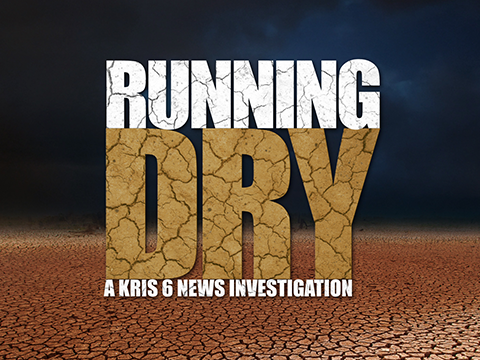CORPUS CHRISTI, TX — Human activity and environmental changes have long been impacting Coastal Bend waters. But studies at the Harte Research Institute show that problem may become worse due to significant nutrient pollution created what's called a "dead zone."
NOAA described a dead zone, more commonly known as hypoxia as, "an area with a reduced level of oxygen in the water." This is an issue because, like land mammals need air to breathe, so does the aquatic life in the water below.
In this latest study on the Gulf of Mexico dead zone, scientist have found its larger than average. Even more disturbing it’s not getting better.
"I'm not really surprised. This is an annual occurrence,” TAMUCC Harte Research Institute Researcher Dr. Xinping Hu said.
Hu explained the nature of a dead zone. First off, the problem starts at the Mississippi River Basin.
"There's a lot of agricultural fields where people apply fertilizers. If this fertilizer is not completely used by the crops- some of it will be washed into the river channel and flow down to the Coast,” Hu said.
That's called runoff and it makes its way to the Gulf of Mexico.
"Once the excess nutrients go to the ocean it will simulate the production of phytoplankton as well,” Hu said.
Phytoplankton are microscopic algae, and they thrive on those excess nutrients and reproduce in massive amounts.
Hu said when these algae die, they deplete the oxygen in the water as they decompose. This resulted in low oxygen levels creating what they call a dead zone.
"If the oxygen level is low some of the species will be driven away from the oxygen zone,” Hu said.
Research surveys show the Gulf of Mexico dead zone is now the 12th largest zone on record in the 38 years of measurement. That is equal to 4 million acres of habitat potentially deadly for fish and bottom species.
NOAA stated that, "there are many physical, chemical, and biological factors that combine to create dead zones, but nutrient pollution is the primary cause of those zones created by humans."
Currently Baffin Bay and Oso Bay are at risk of becoming a dead zone.
"For fisheries. If fishermen go out to catch fish and low oxygen is present that means they will have to go further offshore,” Hu said.
As more studies are done, monitoring will also continue in the Coastal Bend.




